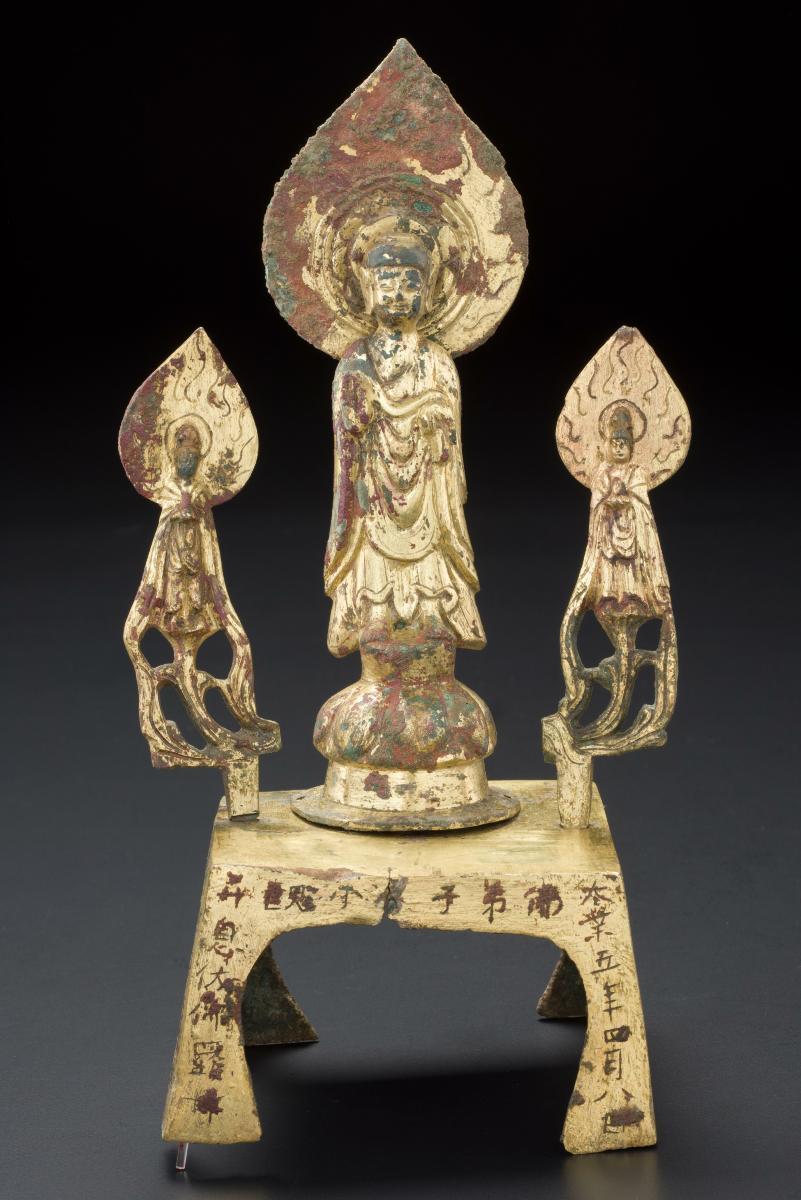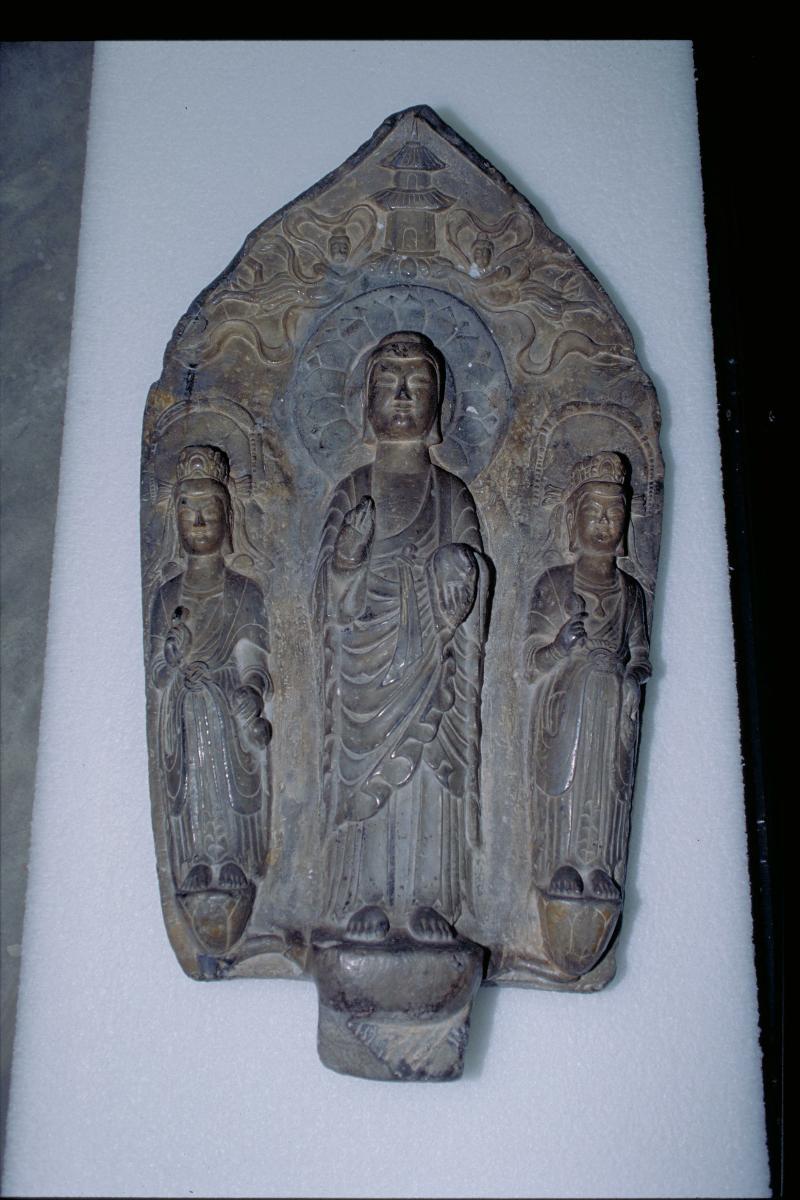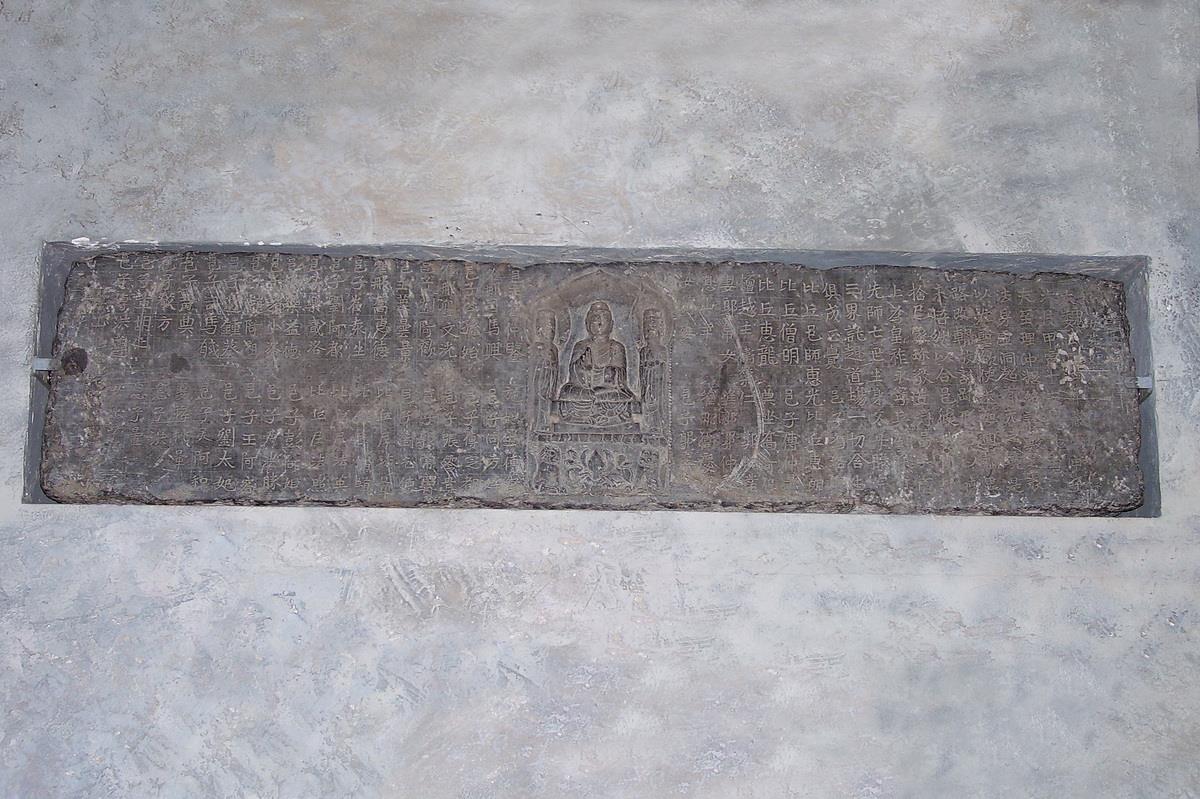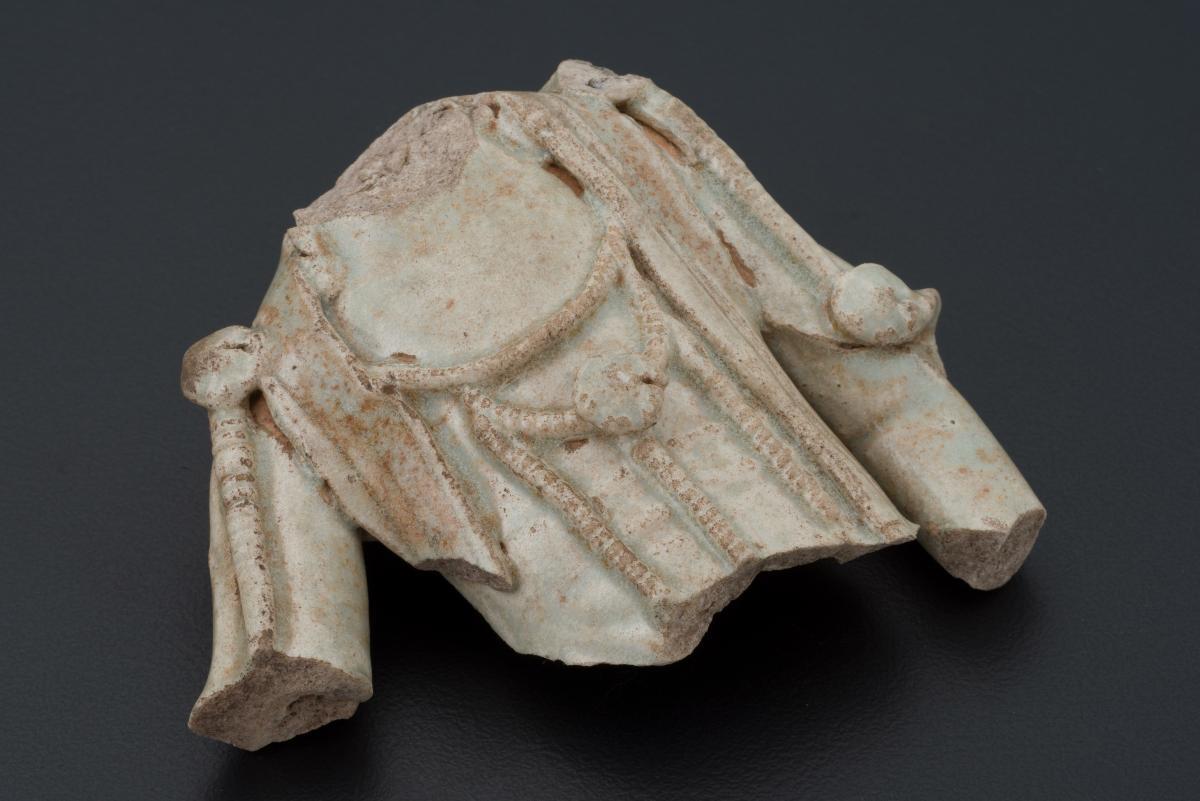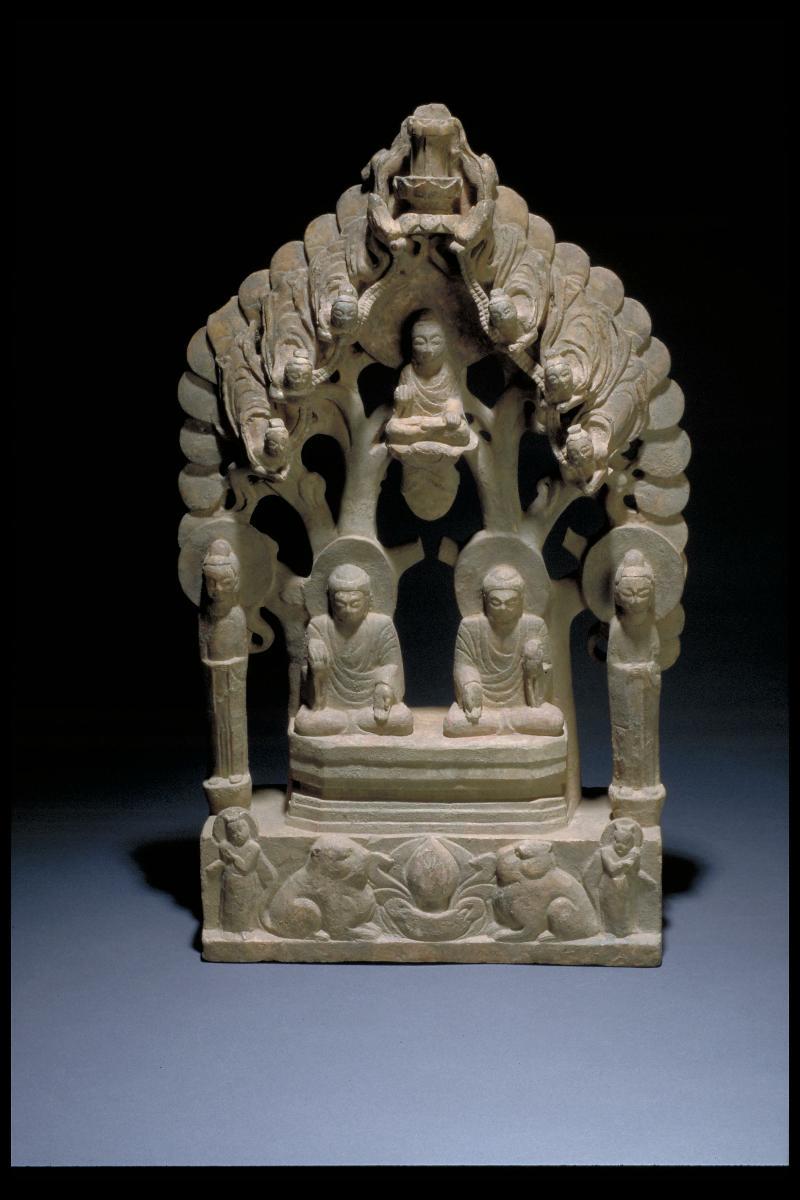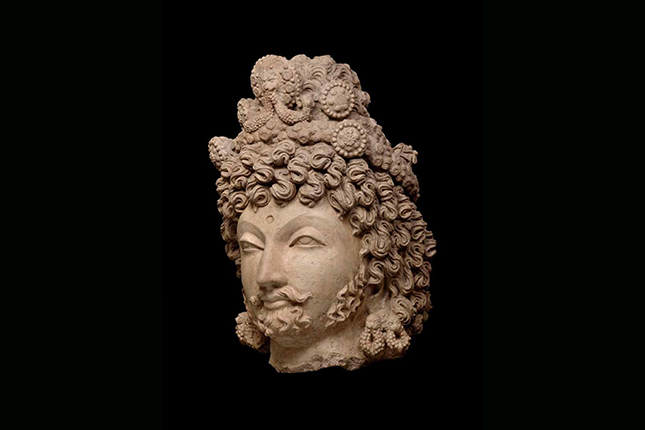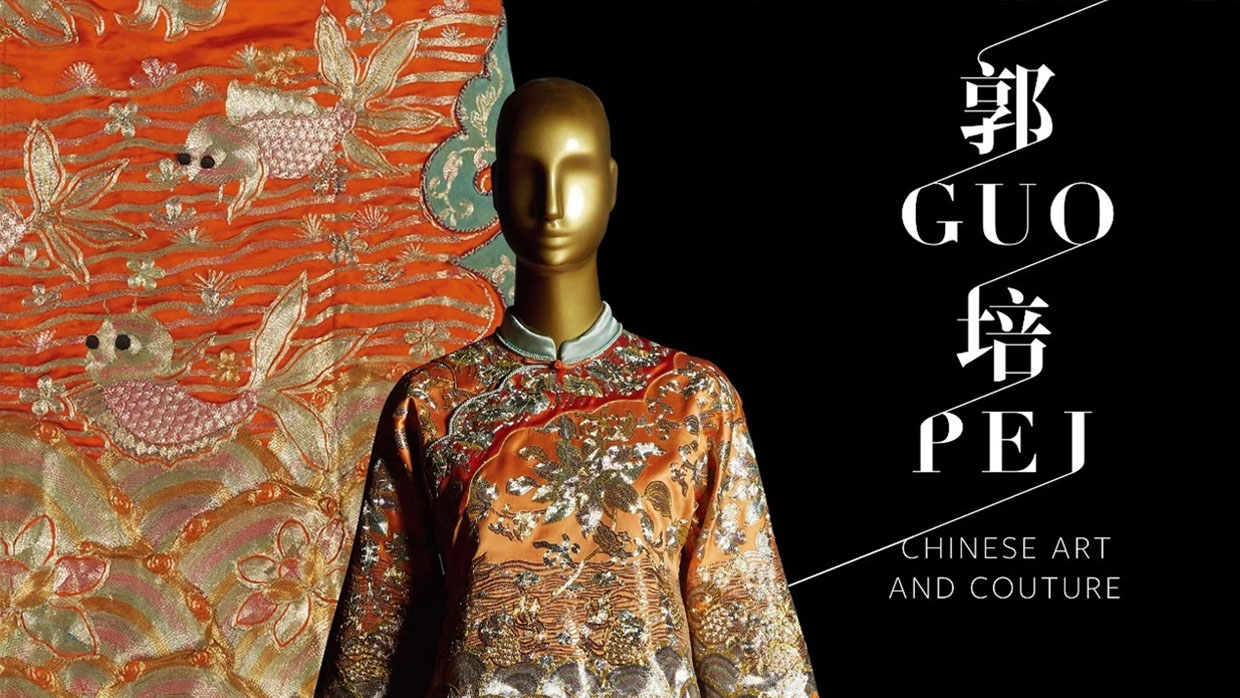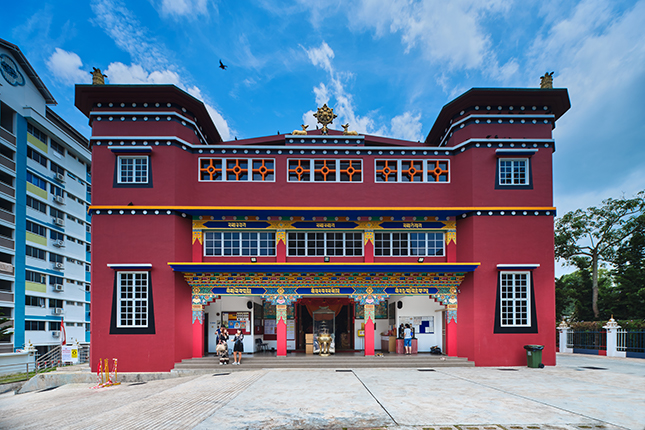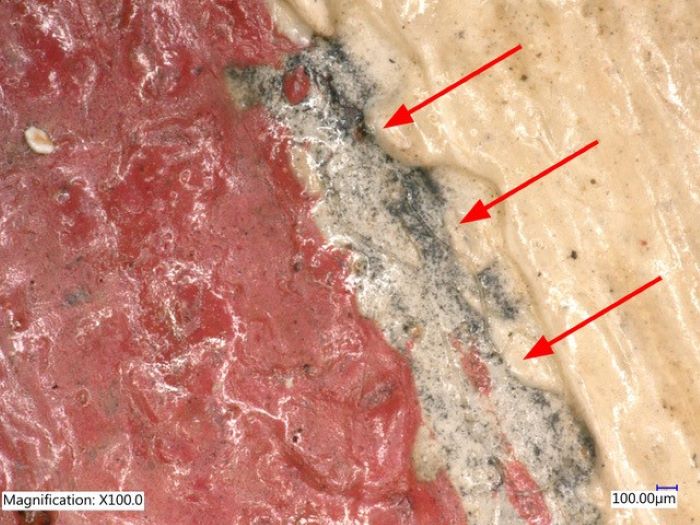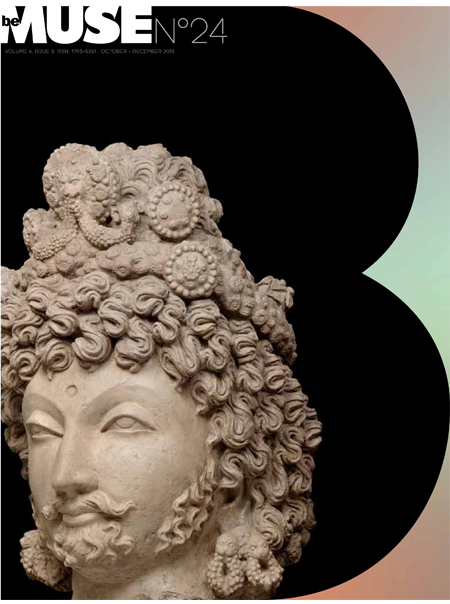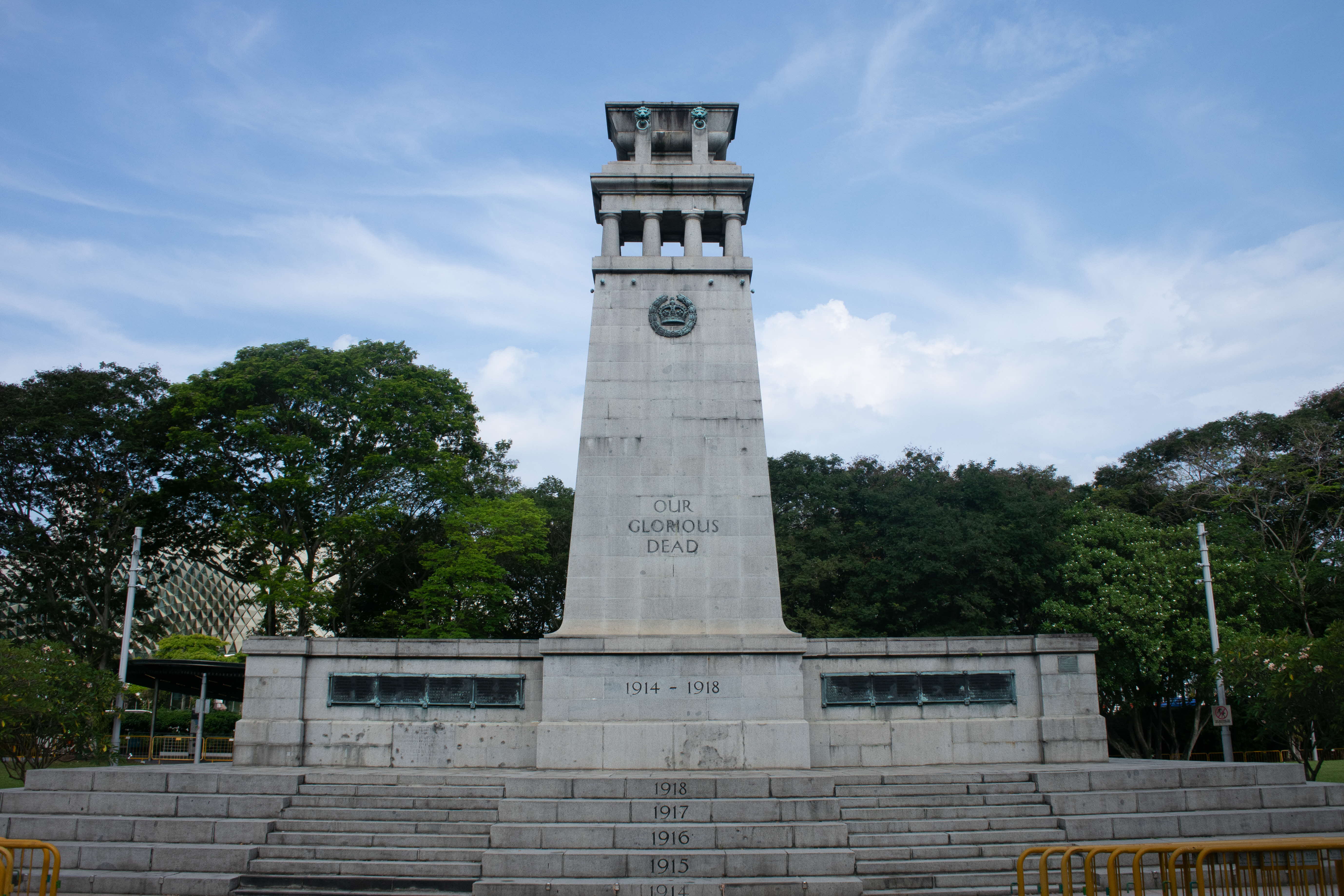Executed in the classical Sui dynasty style, the Buddha stands with varada and abhaya mudras (the bestowing grants and fearlessness hand gestures respectively) with two boddhisattvas. The figurines reflect a sinicization in terms of style with their attenuated forms, soft facial features and schematized flow of robes, a schema which began in the Northern Wei dynasty. However, by the Sui dynasty, precursors of the more voluminous forms typical of the Tang figurines had already appeared, as can be seen in the face and body of the central figure in this triad. This image of this Wuliangshou Buddha was commissioned in 609 CE, according to the inscription all around the stand. The reproduction of Buddhist sutras and images was believed to create merit for the devotee. The accumulation of merit in turn resulted in a shorter cycle of rebirth and hence suffering.




